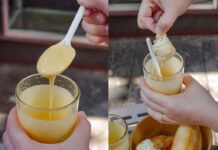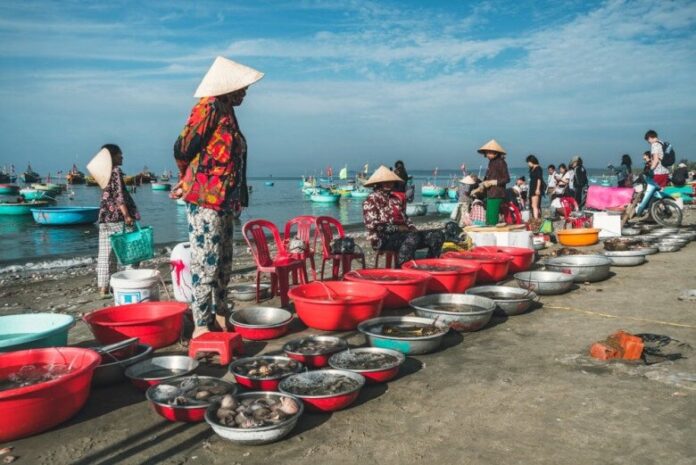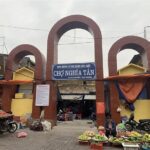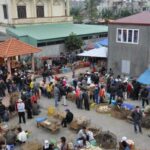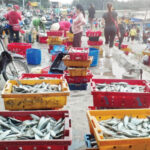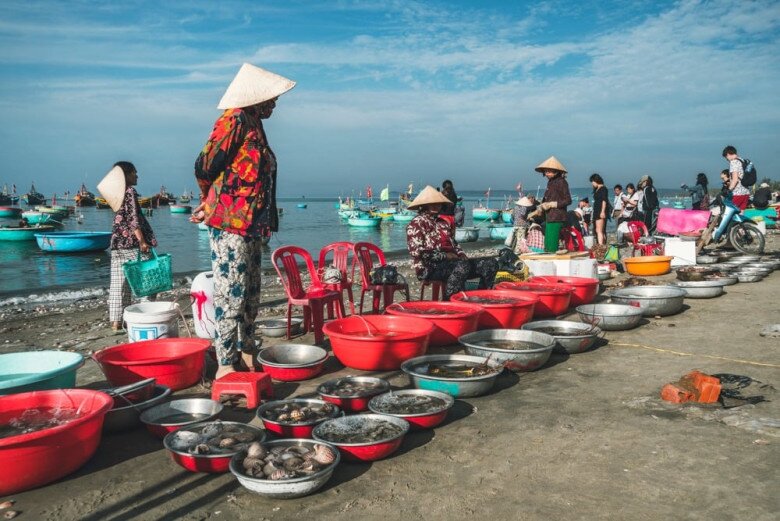
The Fishing Village Market of Mui Ne is located on Huynh Thuc Khang Street, about 20km from the center of Phan Thiet. To witness the vibrant sunrise and the bustling atmosphere of the market, visitors should arrive around 5:30 am.
At this time, the fishing boats return to the shore after a night of fishing. The boats anchor not far from the shore, while the fishermen quickly use basket boats to transport fresh seafood to the beach. Buyers, ranging from locals to traders, are busy with baskets and buckets in hand, eagerly selecting seafood such as shrimp, squid, fish, crab, and snails, while haggling to get the best deals.
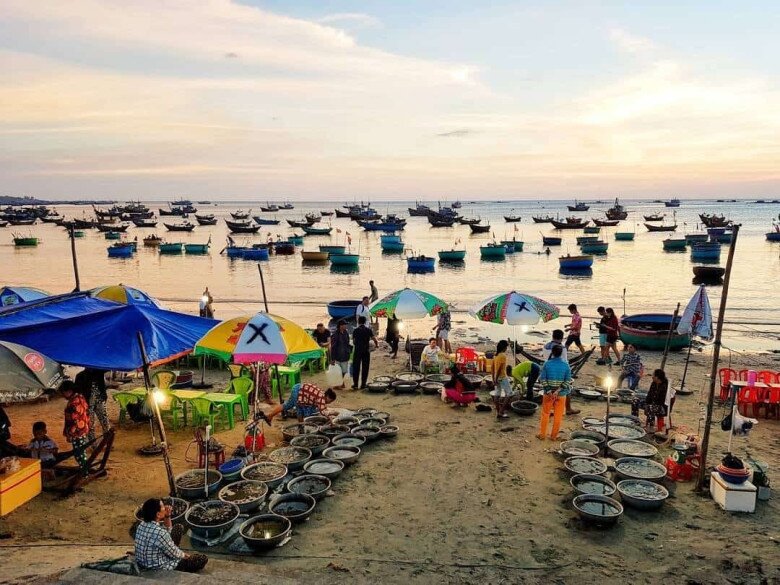
Unlike the bustling markets in the city, the Fishing Village Market of Mui Ne retains its simple and traditional charm. Here, the seafood stalls do not have elaborate displays, but instead, the fish are simply laid out on mats on the sandy ground, with each fisherman selling their own catch.
In the past, the fishermen had to transport their seafood to wholesale markets or tourist areas to sell their catch. However, with the increase in tourism in recent years, most of the seafood is now sold directly at the market.
What sets this market apart is its unique selling method – seafood is sold by the bucket instead of by weight. Depending on the type and quantity of seafood, the price of each bucket ranges from VND 100,000 to a few hundred thousand dong. Especially, the “mixed” buckets, which include various seafood such as crab, snails, shrimp, and squid, are sold at a fixed price of VND 150,000 per bucket.
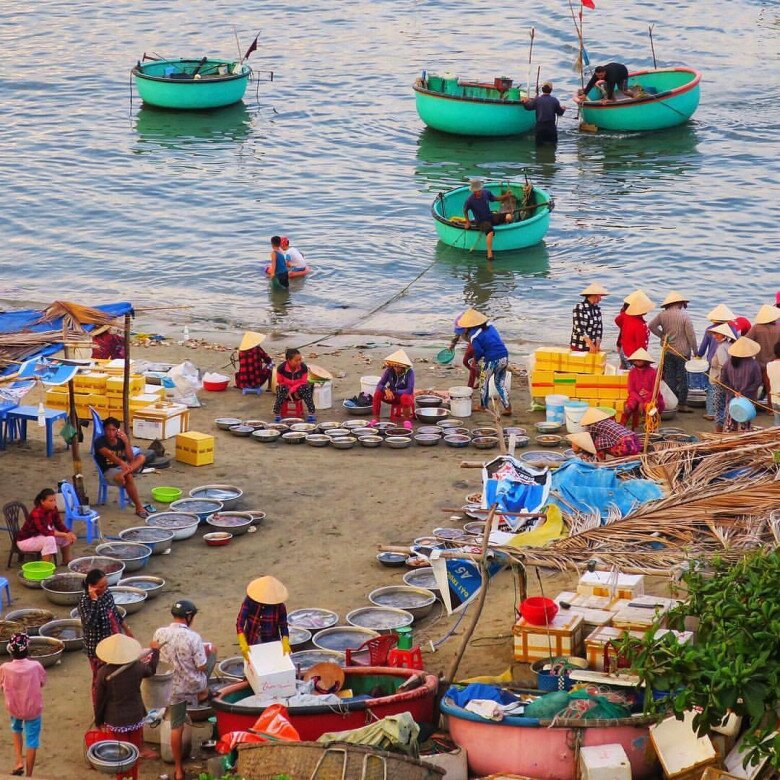
Even lobster is sold by the bucket here, with prices ranging from VND 400,000 to 800,000 per bucket, containing 3 to 5 lobsters. After purchasing, tourists can take their seafood to nearby restaurants or resorts for processing, with a fee of about VND 40,000 for simple dishes such as steamed or boiled seafood.
Some of the fresh fish caught in the nets are grilled on the spot or used to prepare characteristic dishes such as sour soup cooked with tomatoes, onions, and chili peppers. In addition, locals also have other processing methods such as making salads, frying, or braising.
According to local fishermen, this form of trading has been a long-standing habit of the coastal people. In the past, they used to sell seafood in large quantities to traders, sometimes even hundreds of kilograms at a time. However, with the development of tourism, they have gradually shifted to retail sales.
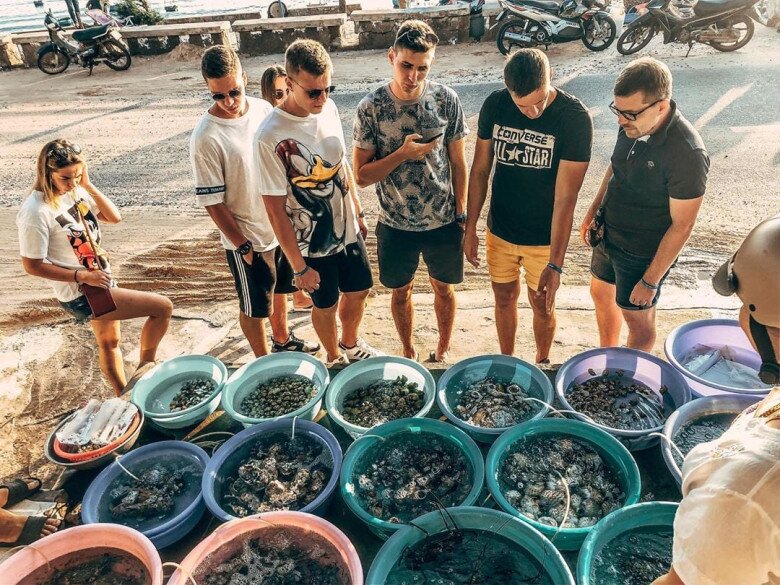
However, recently, some issues such as short weight and unreasonable price increases have emerged in the market. Some tourists have reported these issues to the authorities and shared their experiences on social media platforms.
To rectify the trading activities, the People’s Committee of Mui Ne Ward has set up counter-evidence scales right in the market, helping tourists to check the weight of goods before buying. At the same time, the local government is also actively handling the situation of messy tent construction, ensuring the aesthetics of the Fishing Village Market.
Notes when visiting the Fishing Village Market of Mui Ne
To have the best experience when visiting and shopping at the Fishing Village Market of Mui Ne, tourists should keep in mind the following notes:
– If you plan to buy fresh seafood to take home, prepare a cooler and ice to preserve it, especially if you have to travel a long distance. Seafood can easily spoil if not stored properly.
– Since the market is located right on the beach, wear comfortable shoes that are easy to move around in. Avoid wearing high heels or stiff sandals as they can be difficult to walk in on the sand.
– Maintain general hygiene, do not litter, and respect the local people’s living space.
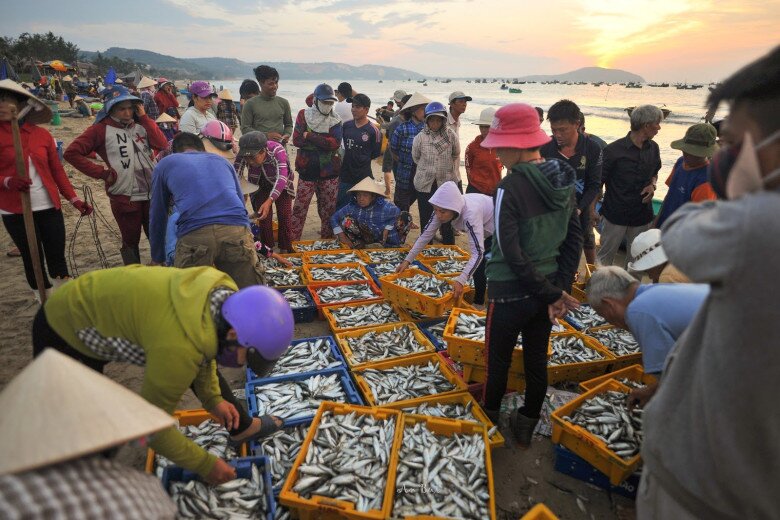
The Fishing Village Market of Mui Ne is not only an ideal place to enjoy fresh seafood but also offers visitors a chance to explore the daily life of coastal fishermen, creating memorable experiences during their journey of discovery in Binh Thuan province.
The Heart of Hue: A Country Market with a Twist.
Nestled amidst the white sandy beaches of Thua Thien Hue, Vinh Thanh Market buzzes with vibrant energy amidst the tranquil countryside. Beyond being a mere trading hub for locals, this unique market convenes thrice daily, vividly portraying the distinct cultural practices of a region nestled between the sea and the lagoon.


















